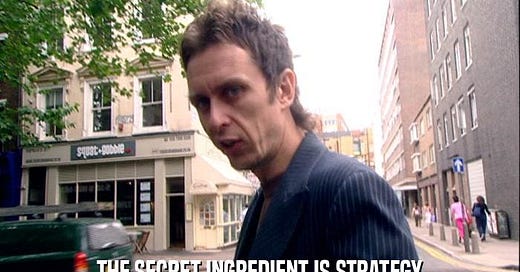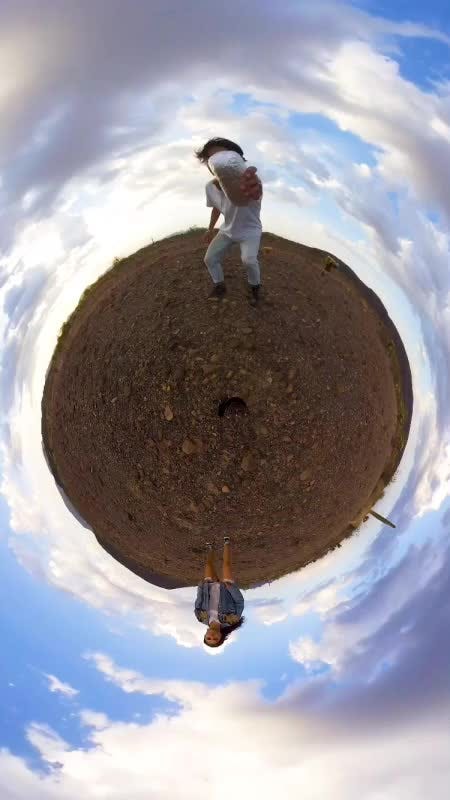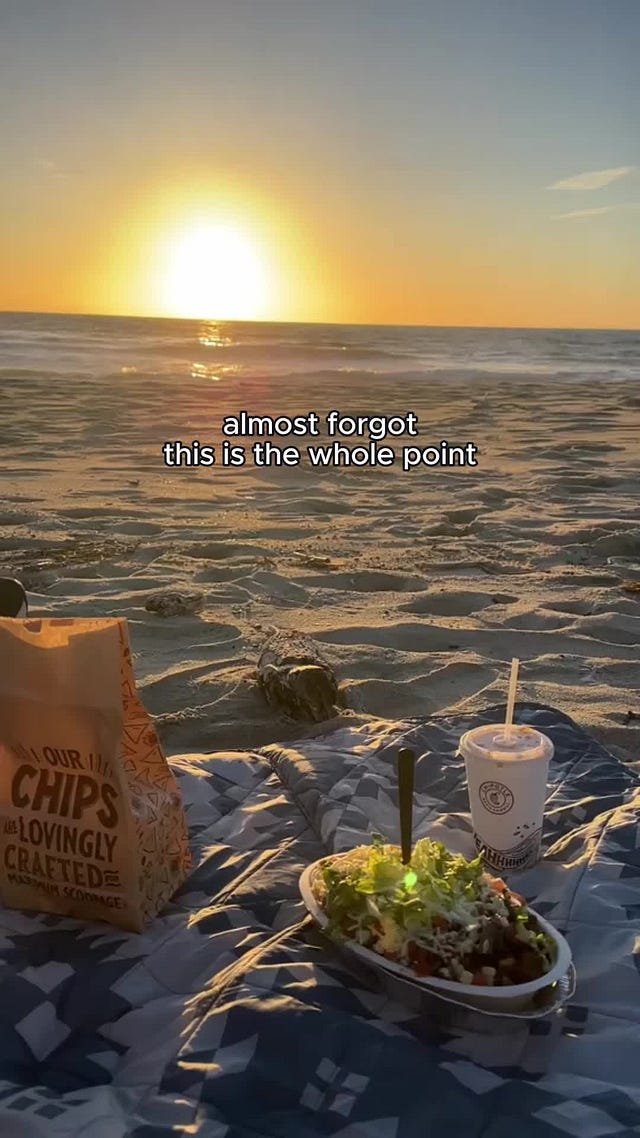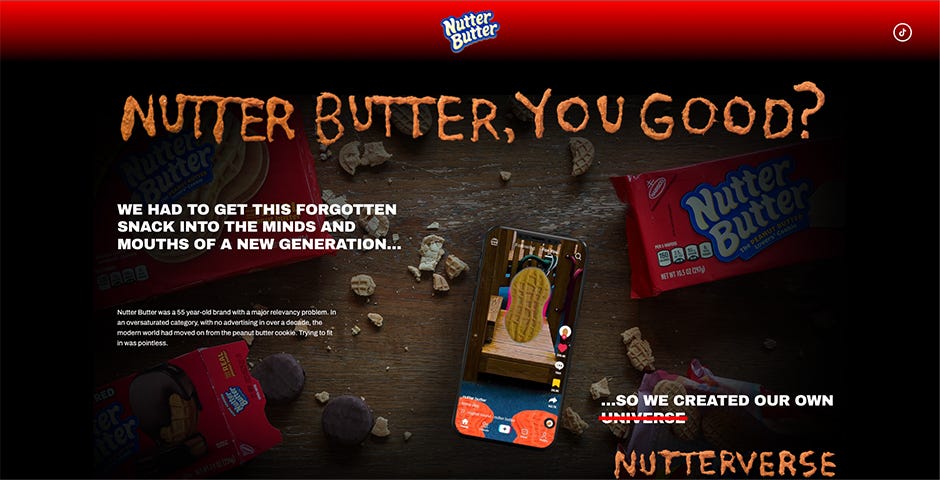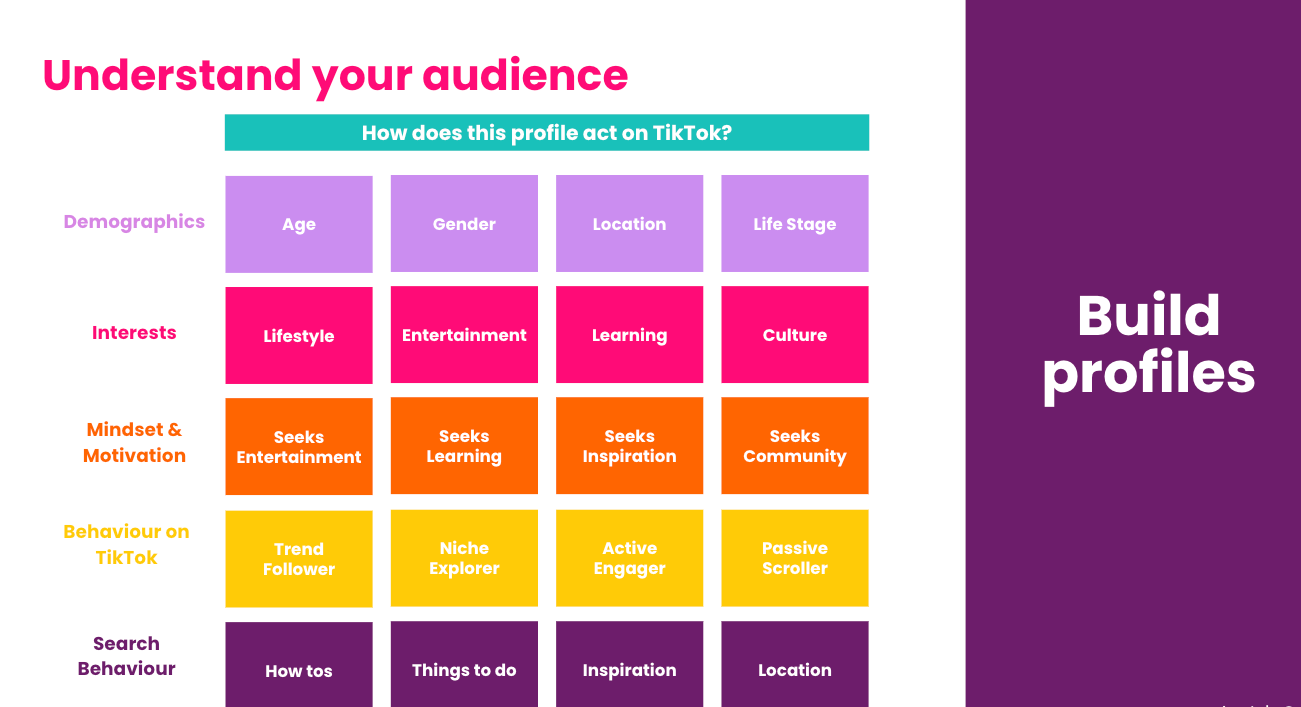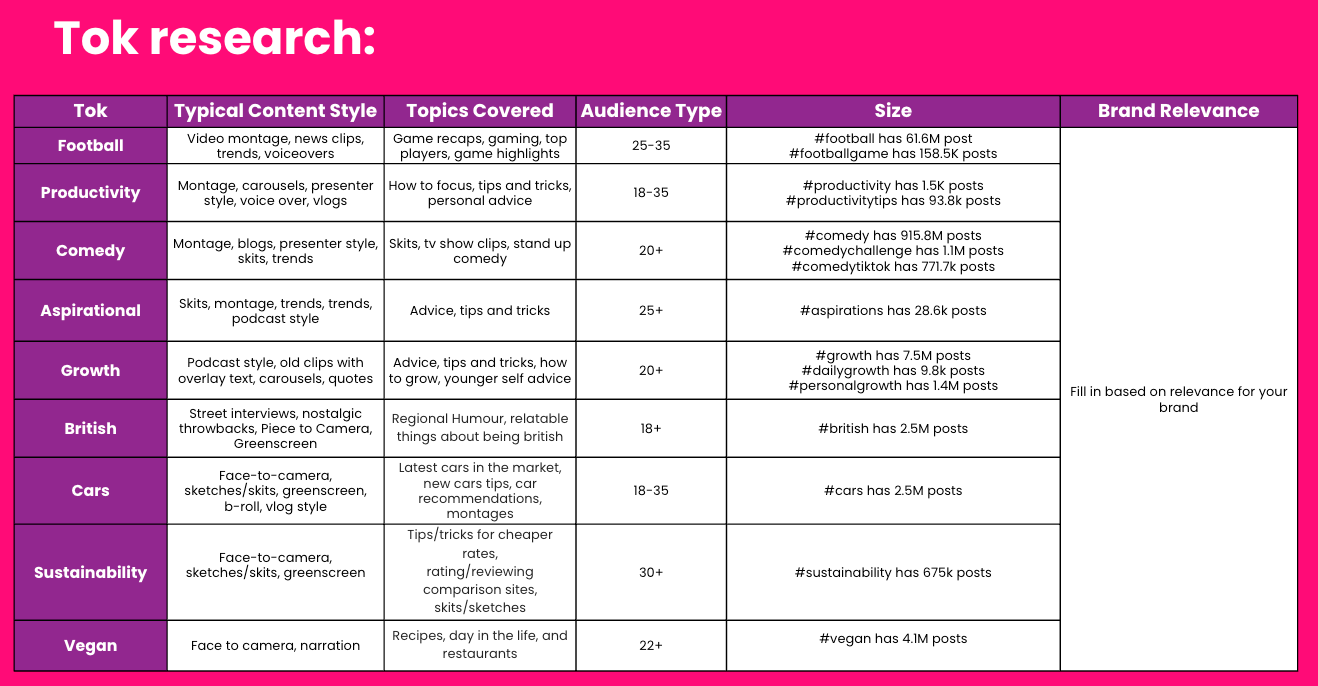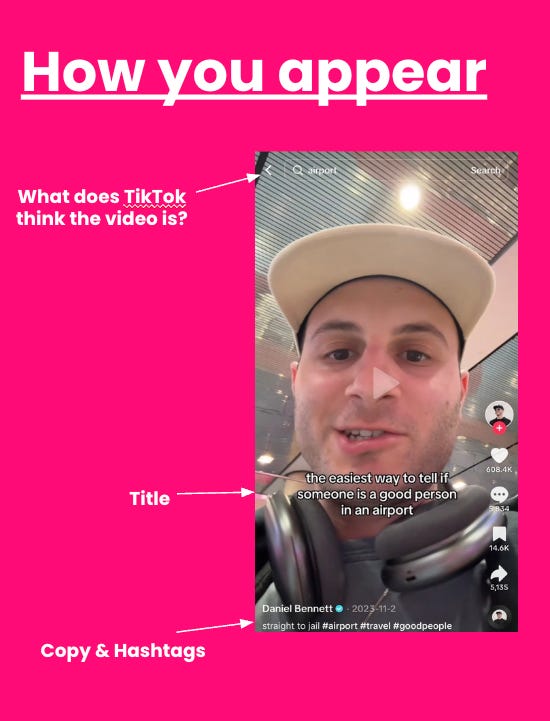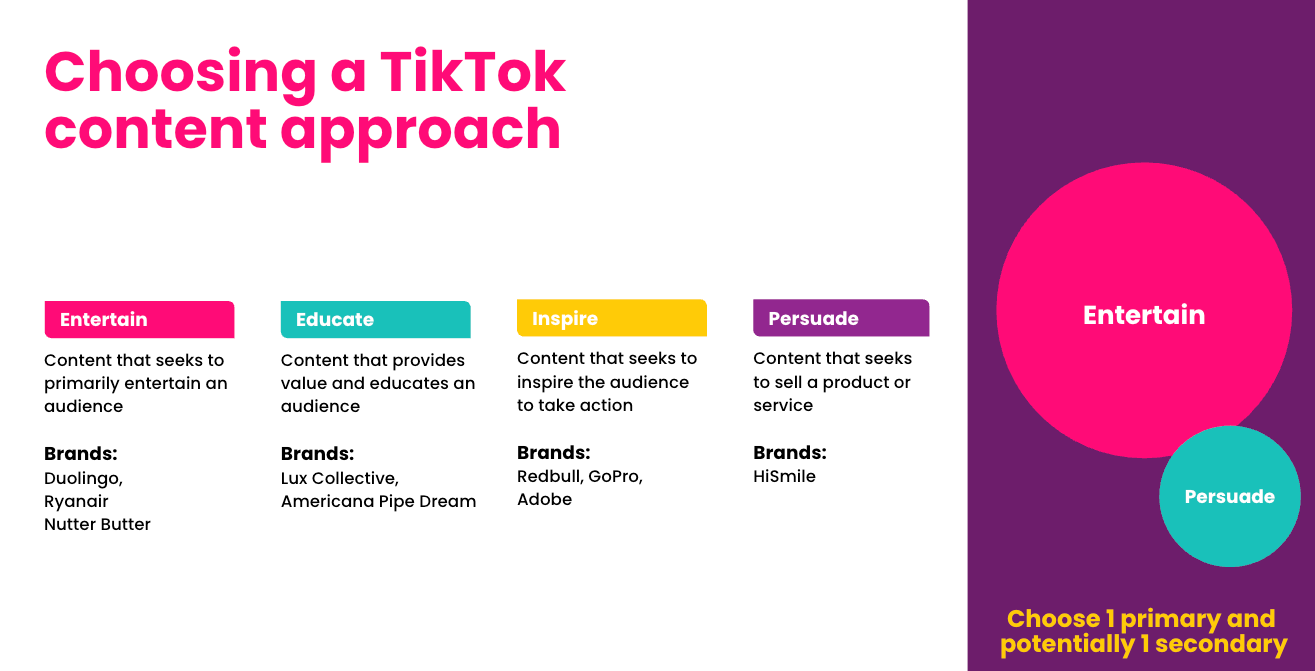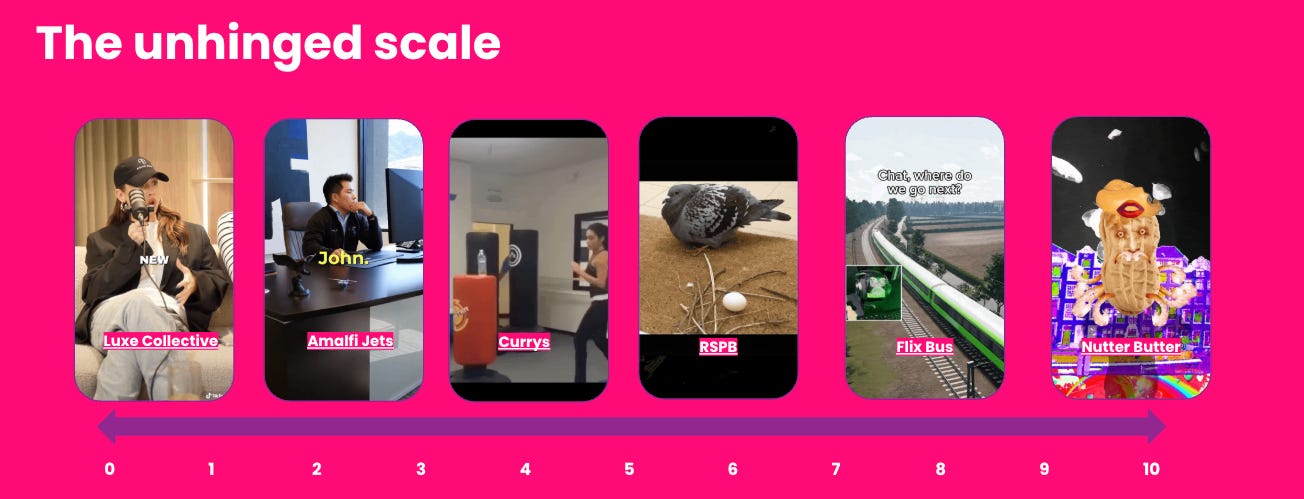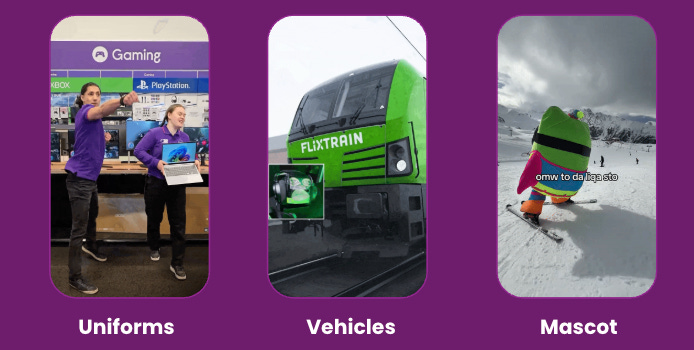Building A Better Organic TikTok Strategy For Your Brand
During some recent research into brands on TikTok and what they used to look like, I was struck by the reality of how long some brands have been going hard on TikTok.
Take Chipotle for instance, with their first post being on March 2019:
 Tiktok failed to load.
Tiktok failed to load.Enable 3rd party cookies or use another browser
A full year before Covid hit, and already they’d landed a viral moment.
The filming style screams “early days”, but fast forward to now, and Chipotle’s content feels totally 2025: native, authentic, UGC led, and deeply in tune with the platform’s culture.
 Tiktok failed to load.
Tiktok failed to load.Enable 3rd party cookies or use another browser
This shift mirrors what’s happened to TikTok itself, it’s grown up.
What started as a challenger app is now one of the most powerful cultural and commercial platforms on earth, with over 1.59 billion monthly active users.
So the big question becomes: how can brands actually win with organic content on TikTok?
Let’s start by being honest about something:
Most brands don’t have a TikTok strategy.
They have a content plan or a list of tactics.
As one of the best thinkers in the social media marketing space, Michael Corcoran puts it:
“If you can’t clearly answer, ‘What are we trying to solve for the business with social media?’ and explain what you’re going to do and how you’re going to do it, then you probably don’t have a social strategy.”
And he’s spot on.
The result of this for brands is a TikTok feed full of forgettable content, teams confused about what success even looks like, and leadership asking: “Is this actually doing anything for our brand?”
So if your answer to “What’s our TikTok strategy?” is:
“We post 3x a week”
“We jump on trends”
“We’re working with creators”
…then that’s not strategy. That’s just activity.
So let’s fix that.
What makes a TikTok strategy…. a strategy?
When we talk about strategy on TikTok, we don’t mean a plan.
A plan tells you what to do.
A strategy tells you why you’re doing it, who it’s for, what you’re choosing not to do, and how it connects back to your brand and business goals.
This distinction really matters.
First: What’s the business problem?
Let’s go back to Michaels’s point about starting with the business problem.
Not “what do we want to post.”
Not “how often should we post?”
The first question is: what are we trying to solve for the business?
Here are some real examples we’ve seen with brands we work with at Nonsensical:
“We’re trying to shift brand perception… we’re seen as too old, too serious.”
“We’re trying to drive more footfall in-store from Gen Z.”
“We want to reach students with a product that feels premium, not discount.”
“We need to show we’re part of culture, not behind it.”
“We want to create consistent organic interest that supports our paid activity.”
Whatever your version is then say it out loud. Write it down. Start there.
A great example is the wild world that Nutter Butter have built on TikTok:
 Tiktok failed to load.
Tiktok failed to load.Enable 3rd party cookies or use another browser
It’s brainrot and unhinged to the extreme, and many brands wouldn’t go near this type of TikTok approach.
Alongside this, some people would say this isn’t a strategic approach on TikTok, but I beg to disagree.
Looking through Nutter Butter’s recent award submission for this wild approach, they’ve tied everything back to a business problem:
Nutter Butter was a 55 year old brand with a major relevancy problem. In an oversaturated category, with no advertising in over a decade, the modern world had moved on from the peanut butter cookie. Trying to fit in was pointless.
Nutter Butter had a relevancy problem with a younger audience, and the nutterverse became the solution.
They very clearly know who they are on TikTok.
How they got there is one matter of course…. so….
What makes a TikTok strategy a real strategy in 2025:
1. It starts with a real business problem
Everything should ladder back to a commercial or brand goal. Not “we want to be more consistent” or “we want to grow our following” … but actual outcomes that the business cares about.
That might be:
“We need more people to know we exist” → Awareness
“We need Gen Z to take us seriously” → Relevance
“We want people to understand our product better” → Education
“We’re not converting organic traffic into action” → Conversion support
Name the challenge clearly, and the objectives become a lot easier.
2. It’s a series of deliberate choices
Strategy is about focus. And just as importantly, it’s about what you’re not going to do.
On TikTok, the temptation to do everything is constant.
Jump on this trend. Partner with that creator. Post more. Do more. Try more.
But strategy is about making calls like:
“We’ll live inside this Tok, not try to be everywhere”
“We’ll focus on community, not reach”
“We’ll be funny and useful not polished or aspirational”
3. It links content decisions to business outcomes
This is the missing link for most brands.
They’re posting consistently. They’re using trends. But ask what impact it’s making on the business, and it gets vague fast.
A good TikTok strategy shows how your content actually delivers on your objectives:
Want to build trust? → Create episodic formats with emotional hooks
Want to rank in search? → Target TikTok SEO themes with creator support
Want to support conversions? → Use POVs, testimonials, and CTAs in-feed
If the business wants X, your TikTok should show how it contributes to X. Otherwise, what’s the point?
4. It’s built for long-term consistency
TikTok changes daily, from trends, formats, sounds, behaviour.
But if your strategy is solid, you can adapt quickly without losing your identity.
That means having:
Clear content pillars
Repeatable formats
A recognisable tone of voice
A process for testing, learning, and tweaking
It also means your team knows how to be flexible, without starting from scratch every time.
5. It creates ownable, distinctive content
This is the payoff of all of the above.
If someone sees your video out of context and doesn’t instantly know it’s from you, your strategy hasn’t gone far enough.
Great TikTok strategies create memory structures: voices, visuals, in-jokes and styles that feel uniquely yours.
That’s when TikTok starts working for you, when people seek you out, tag their mates, or say “this is so [your brand]”.
What does a 2025 TikTok strategy actually look like?
This guide walks you through every core component of a strong, scalable organic strategy for TikTok in 2025, from setting objectives to finding your Tok, building a recognisable style, and creating consistent value.
At the outset it is fundamental to understand these major pillars of a TikTok strategy.
We build a strategy based on the following core pillars:
Turn that business problem into a strategic objective
Let’s start with your objectives..
Why are you on TikTok as a brand in the first place?
If your goals aren’t clear, your content style will drift, your targeting will be off, and your success metrics won’t mean anything.
So be really clear here… is it really about sales?
Let’s also be honest about this, because if the problem you’re trying to solve with TikTok is about a pure and simple sales objective, then organic investment won’t always be the right investment here.
If your objective is short-term sales, it might make more sense to focus on creators, ads, and paid media. That’s fine, but it’s a different kind of investment.
Organic is where you build long-term equity. It’s slower, harder to measure week to week, and definitely harder to get right, but when it works, it compounds.
It creates brand memory, emotional connection, and a flywheel that paid content alone can’t match.
So choose the right route for the problem you’re trying to solve, and don’t confuse short-term output with long-term value.
But one thing at a time here, as we’re focusing on organic for now… so back to problems.
Narrow your problem down to one of these six core objectives and make it specific:
Drive Brand Awareness - Get more people to know your brand exists
Be Culturally Relevant - Show up in trends, memes, and conversations people care about.
Build Affinity From TikTok - Create emotional connection and trust.
Create A Community - Create a loyal group of followers who engage, comment and feel part of your brand
Educate Your Audience - Teach people useful things that make them trust your expertise of products
Conversion Support - Inspire people to take action (visit, book, buy).
Pick the one that aligns best with your actual business priority right now and commit to it. Everything else flows from that.
Then make them specific:
Drive Brand Awareness - Reach 1 million new users organically within 6 months through entertaining content
Be Culturally Relevant - Create 1x trending moment that reaches over 10M people this year
Build Affinity From TikTok - Launch a storytelling TikTok series that delivers 100+ comments per video
Create A Community - Create 10k engaged TikTok followers within BookTok
Educate Your Audience - Own the top 5 long tail searches for my brand from TikTok search
Conversion Support - Drive 100 new monthly bookings to our restaurant from TikTok
Who are you trying to influence on TikTok?
The next step is to gain a better understanding of your audience on TikTok.
Hopefully as a business you’ve already got a good understanding of what your target audience looks like, perhaps you even have a few personas you can bring to the mix?
Well take that data and try to build 3 audience profiles with as much information as possible. Because of the way TikTok works, we want to find people with patterns:
What are their motivations on TikTok?
Do they scroll passively or hunt for trends?
Are they looking for education, comedy, community, inspiration?
Choose up to 3 audience profiles here that fit in with your brand and build.
So create 2–3 audience profiles based on platform behaviour, not just CRM data.Talk to customers. Lurk in comments. Watch their behaviour, not just their demographics.
Then find the shared interest that connects them. That’s your way into a community on TikTok.
You’re not building personas for a brand ad. You’re mapping human habits on TikTok.
Where are you earning attention? I.e finding the right ‘Tok’
Where does your brand belong on TikTok?
Every user lives in a handful of TikTok communities and you need to pick the one where your brand makes sense and stands out.
Quick example:
I’m personally in MarketingTok, FootballFansTok, and (because of my dog) SausageDogTok.
And recently due to a stray search I ended up in Katy Perry Tour Tok and Harry Styles in Berlin Tok.
Some of those will fade. Some will stick.
3 of those are relatively consistent spaces I interact with and then the later 2 are recent interjections that will no doubt drop out of my algorithm when the moment has passed.
As a brand, your job is to find the Tok that:
Has cultural momentum
Feels relevant to your product or brand
Has space for your tone and value to feel distinctive
You need to find a space on TikTok where you can fit in authentically and engage your target audiences.
Explore different “Toks” (BookTok, TravelTok, FitnessTok, etc.) and assess:
Size
Search volume
Hashtag relevance
Tone and style
What content wins there
Then ask: where could you show up authentically?
Conduct a Tok research of potential ‘Tok’s that could be relevant to your brand.
Remember these things for how to appear in a Tok
Hashtags and Keywords:
TikTok analyses the hashtags and keywords used in your videos. If you’re using ‘Crystal Palace’ in title of your video, your caption and hashtag TikTok identifies your content as relevant to the Crystal Palace niche and football more broadly.
User Engagement:
TikTok tracks who is interacting with your content. If fans of football, Premier League, or Crystal Palace engage with your videos (liking, sharing, commenting), TikTok will understand that your content is relevant to the football community and push it to similar users.
Content Analysis:
TikTok’s AI can detect football-related visuals, such as match highlights, players, stadium footage, or Crystal Palace merchandise, to understand that your videos are about the club or the sport. This helps categorise the content for FootballTok or SportsTok.
Trending Sounds and Effects:
If you use popular sounds or football-related audio (like match commentary, fan chants, or goal celebrations), TikTok can further determine that your content is relevant to football fans and boost it in those communities.
User Search Behaviour:
TikTok monitors what users are searching for and engaging with. If people are looking for Premier League updates, Crystal Palace highlights, or football news, TikTok will surface your content in search results or on the For You Page (FYP) for football fans.
For more on how to find your tok, check out our previous webinar on ‘How To Find The Right Tok’.
Integrating TikTok Search - TikTok SEO
Another important part of building your strategy on TikTok is integrating TikTok SEO and search.
TikTok is basically now a search engine, and your organic content plays a big part in how you rank.
Using Creator Search Insights, monitor your potential Tok e.g. ‘Vegan’ SEO covers a range of topics that a brand could target, typically around recipes and awareness.
Approach:
Decide what you will target as a brand with your own content each month
Select some potential targets that influencers could use
Engage with the search terms across the board
Watch our previous webinar on TikTok SEO and read our TikTok SEO substack for more detail here.
Content Approach: Choose your approach
Not all content is created equal. Some videos are designed to make people laugh, others to teach them something new, and others to nudge them into buying without feeling like they’re being sold to.
So before you jump into content ideas, scripts or trends, figure out what kind of value you’re trying to give. TikTok users are brutal with their attention, if they don’t get it in 1–2 seconds, they’re scrolling off.
Here are four core content approaches:
Entertain – Make people laugh, relate, or feel something.
Educate – Share useful or interesting info that positions you as an expert.
Inspire – Help people see themselves in your world. Emotional, uplifting, often aesthetic.
Persuade – Subtly (or not so subtly) convince someone to take an action.
Pick one main approach that fits your brand best and ties back to your business objective.
You can weave in a secondary one occasionally, but don’t try to do everything all the time, you’ll end up being forgettable.
Example from our client, Urban Tandoor:
Primary = Entertain (parody songs popular with a British audience with staff)
Secondary = Persuade (restaurant visuals and restaurant name subtly featured)
An organic approach in action:
Tone of voice: how do you show up?
TikTok isn’t just about what you say, it’s how you say it. And tone of voice is where a lot of brands get it painfully wrong.
If you sound too scripted or polished, it feels like a brand trying to blend in at the kids’ table. But too chaotic and ‘Gen Z’, and no one knows what you’re on about.
As part of the strategy, we recommend your tone of voice to adopt on the platform to align with your brand guidelines.
This is really important for:
Building brand awareness and affinity outside of our own content.
Establishing our tone of voice on TikTok.
Training the algorithm about the feeds we want TikTok to place our future content.
There also different scales on how you can position your content as follows:
The unhinged scale
Being “unhinged” on TikTok refers to a brand’s willingness to embrace chaotic, unexpected, and content that breaks traditional corporate marketing norms. It’s about leaning into humour, trends, and personality in a way that feels native to the platform rather than overly polished or scripted.
However, the more “unhinged” you go, the less it begins to make sense and topics move fundamentally in pure weird mode, where the strategy feels like it makes no sense. Nutter Butter is the primary example of this (although of course there is clear method to their madness as they try to bridge the relevancy gap with Gen Z).
It ultimately can work to go this hardcore, but to what end?
It really needs to match your original objectives on the platform.
The sassy scale
Being “sassy” on TikTok refers to a brand’s willingness to make fun of themselves, customers or general topics in a cheeky and amusing fashion.
Not all comedic or entertaining strategies need to be sassy but it is an additional element that can be weaved into a brand’s tone of voice in the content, the community management, or both.
Pick where you sit on the 1-10 spectrum.
 Tiktok failed to load.
Tiktok failed to load.Enable 3rd party cookies or use another browser
Remember, not everyone can be Ryanair…
Then bake that tone into everything… captions, replies, scripts, hooks.
Developing an ownable style
Okay so let’s assume everything we’re doing on TikTok is anchored to the right business problem and objectives, we’ve zeroed in on our audience, we’ve found their shared interest and found our space on TikTok… we’ve even decided if we’re entertaining.. a little bit unhinged and sassy.
Now comes the hard part.
We’ve got to create something good for TikTok!
Without good creativity and content that stops the scroll, the whole strategy is going to gather dust if we’re stuck in a loop of 200-300 views as the pay back for the investment into TikTok.
So what do we do…
Most brands on the platform start with what other brands are doing and copy it.
But your strategy also needs to answer: how will people recognise us on TikTok without our logo?
If someone sees your video out of context on their FYP, stitched into someone else’s content, shared in WhatsApp and doesn’t know it’s you, then your style isn’t doing enough.
Style on TikTok is about building visual and tonal consistency across your formats. It’s what makes your content feel like your content, not just another trend clone.
Once you’ve chosen your Tok, you need to find a style that your brand can own in this space. This should be based on your resource, capacity and expertise.
Examples of successful brand TikTok styles:
Being original is incredibly difficult, so don’t be afraid to evolve other brands or creators styles to find your own thing.
Things to consider:
Filming style – Are you handheld and messy? Static and talking-head? Wide-angle in-store? Pick one.
Recurring assets – Uniforms, backdrops, products, mascots, a jingle, even a certain camera angle.
Characters or talent – This could be staff, creators, or even your founder, the more recognisable the better.
Signature sounds - Is there a consistent song? A jingle? The same opening every time?
Pacing and editing – Fast cuts? Long pauses? Text overlays? Make it deliberate.
But just make sure it….
Is scalable
Doesn’t copy competitors
Not popular in your target Tok
You can commit to it
Your ‘style’ might also have multiple formats within it.
It could be characters that tie it together, or a unifying theme.
And frankly it might not make sense at first glance… in Rory Sutherland’s great book Alchemy he argues:
The most effective ideas don’t make logical sense at first glance
This is so true with TikTok… sticking an eyes filter on a plane? Twerking in a life size branded mascot…. a crazy evil looking universe with peanut butter characters?
None of these are objectively better content styles than others, but they’re ultimately incredibly distinctive and that’s the point.
So, when building your TikTok style, forget about “what’s trending?”
Ask:
What’s a tone that only we could own?
What’s a visual style that doesn’t need a logo to be recognised?
What character, sound, or pacing could become our signature, even if it doesn’t make logical sense at first?
What are your brand assets?
How can you make it integrate into the content seamlessly without it feeling like it’s a hard sell?
Currys - Uniforms
FlixBus - Vehicles
Urban Tandoor - Location
Duolingo - Mascot
What is your secret sauce?
What do you have available that allows you to create interesting content?
Is this Behind-The-Scenes (BTS) content, celebrity partnerships, event access / coverage.
At the end of the day you don’t need to reinvent the wheel on TikTok. Just own a wheel that no one else is rolling with.
Most importantly don’t aim to be safe. Aim to be remembered.
As Rory would say:
“The problem with logic is it kills off magic.”
And magic is what makes TikTok work.
Content pillars: Create a repeatable system
Content pillars help you group and rotate your ideas around different topics so you’re not scrambling every week wondering, “What the hell do we post today?”
What you need is a consistent rotation of content topics that:
Provide value
Are native to the platform
Reinforce your brand's message
Content pillars help group your content together around different topics to help scale your ideas further.
When starting on TikTok you should define at least 3 content pillars that you can confidently build at least 3 months worth of content around.
Start from the shared interest and search.
Anchor inside your Tok community.
Define 3-4 core content pillars to build content around.
Start with 3–4 you know you can run with for at least three months. Each should be flexible enough to react to trends, but strong enough to stand alone.
A big tip here… create at least 5–10 starter ideas per pillar before you commit to it. If you can’t do that, it’s not a pillar, it’s just a one-off post idea.
Cadence: Find your posting rhythm
“How often should we post?! And at what time?!”
This gets asked a lot by brands and creators on TikTok, but start with what you can actually sustain.
I did a TikTok on this a few weeks ago, having looked at how often the top brands were posting on TikTok, and it is not as much as you think:
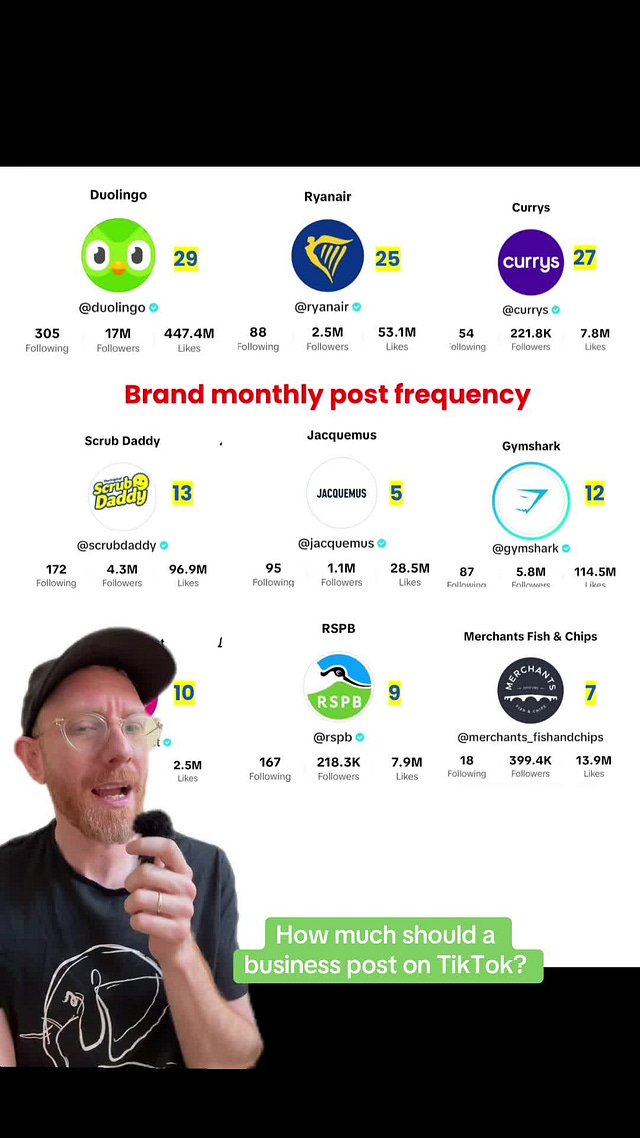
 Tiktok failed to load.
Tiktok failed to load.Enable 3rd party cookies or use another browser
It’s better to post 3 solid videos a week that are native, strategic and on-brand, than rush to 7 with no consistency or learnings.
Here’s a simple TikTok rhythm:
Minimum commitment: How often will you post, no matter what? (e.g. 3x/week)
Reactive slots: How many posts can be reactive to trends or comments?
Time buffer: Give yourself room to test, learn, and re-post variations.
Engagement: Act like a human, not a brand
Posting is just part of the job of a good social media manager for a brand. The other part? Showing up where your audience lives in the comments & in their Toks.
TikTok is a community platform, not a broadcast one. So:
Spend 15–30 minutes replying to comments when you post
Comment on other videos in your niche, not just your own
Use the comment reply feature to create follow-up videos where it’s appropriate
This is where affinity can really build on TikTok. Your comment section should feel more like a conversation, not a billboard.
KPIs: Measure what matters
Let’s stop obsessing over views in isolation. If your goal is brand trust, who cares if your video hit a million people with a CapCut that no one knows is from your brand?
Match your KPIs back to your original objective on the platform, and ultimately the ones that your business is going to care about.
Here are some options you can use:
Also: track learning-based metrics, i.e. how your hooks perform, where drop-off happens, which videos over perform etc.
But either way, understand what the senior leadership is really going to care about at the end of the year on TikTok.
There is no use showcasing your fantastic views to the CEO… if they don’t give a shit.
If everything is all gearing back to the original business problem that TikTok is trying to solve then we’re in a great place.
So to wrap it up…
A good organic TikTok strategy needs to clearly answer what problem you’re trying to solve for the business, but also how you’re going to do that, in a way that feels distinctly like your brand.
Everything else…your tone, your style, your content formats, your cadence flows from that.
Yes, it’s tempting to skip to trends and tactics.
Yes, it’s quicker to start posting and hope for the best.
But without strategy, it’s just noise in a very noisy room on TikTok.
And to keep banging the Rory drum, ‘the most effective ideas often don’t make perfect sense.’
They make magic.
They create emotion, memorability, momentum.
They solve the real problem, even if they don’t look perfect in a marketing deck.
At the end of the day a well-thought-out organic TikTok strategy isn’t just about better content.
It’s also about building something long-lasting on the platform - without needing a million-pound media budget to back it up.
Now go make something worth remembering.

